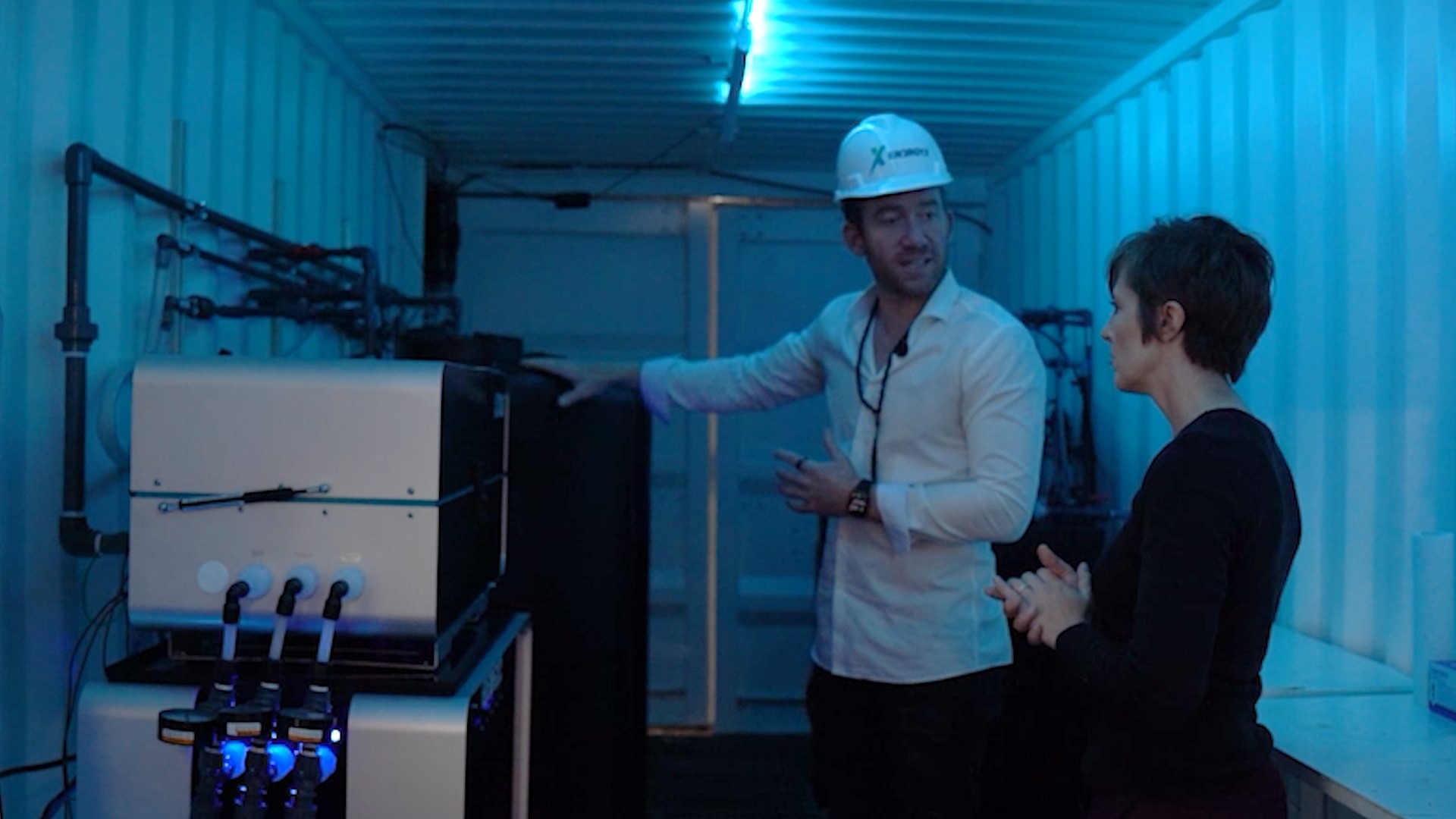AUSTIN, Texas — Listening to Teague Egan talk about his company will take you back to science class.
“We have made a variety of different membranes that can do different types of lithium and other ionic separations,” Egan said.
His company, Energy X, refines lithium. Lithium is mostly used in batteries. Phones, electric vehicles and the electric grid use lithium for power.
Other uses include ceramics, glass, grease and polymer production.
“Energy is changing and batteries are a big part of the energy transition,” Egan said.
Egan’s business is a technology company. They don’t extract the chemical element, they separate it from brine.
“The existing methods of lithium production are really inefficient right now. They use natural evaporative pods. We want to transition from that natural evaporation method to a mechanical separation method using these extraction technologies,” Egan said.
NASA images show how the evaporation ponds vary in color.


Environmental groups say extracting and refining lithium harms the environment.
“In South America’s lithium-rich Atacama Desert, lithium exports come from salt deserts, or salares. Salty groundwater is pumped to the surface and evaporates from large surface basins, leaving behind residual salts, including lithium.
Though cheap and effective, this process is heavily water consumptive in a part of the world where water is precious. It also has the potential for toxic chemicals to leak into the potable water supply,” the Department of Energy’s website shows.


“Lithium is arguably the most important component of the battery,” Egan said.
Egan’s technology aims to increase efficiency for separating the lithium and reduce the need for evaporation ponds.
“The big lithium producers have spent billions of dollars building these ponds and they operate at around 30 to 40% efficiency. So you have 60 to 70% of the lithium still on the table, right, to capture. So we've designed our process to first compliment those ponds, to capture all of that efficiency and recovery that's left on the table,” Egan said.
Energy X ships trailers ready to separate the lithium to mining sites.
“We increase both efficiency and throughput,” said Andrew Mullenax, director of process, engineering and projects for Energy X.
Egan said it’s a way to help the producers stay in business. It helps gather more of the metal for the world. Egan has his technology deployed in South America.
“We're basically looking at the supply chain that feeds into batteries, and batteries are a critical element to power the energy transition. So when you think about battery materials, what actually goes into batteries? That's a big, big problem – producing enough of that to make the batteries that power the cars, power the electronics and power the future of the energy transition,” Egan said.
The U.S. relies on other countries to get lithium.
The 2022 U.S. Geological Survey (USGS) Mineral Commodity Summary shows, “The only lithium production in the United States was from one brine operation in Nevada.”
It concerns the U.S. government.
Both former President Donald Trump and President Joe Biden list lithium among the minerals critical to our nation’s security. And the Department of Energy’s Lithium battery blueprint shows how lithium will play a big role in our power grid.
“Stationary energy storage can benefit the electricity grid by providing many services, such as enabling high penetration of intermittent renewable energy sources, serving remote communities, supporting transportation electrification, increasing resilience, optimizing energy production and usage, and supporting critical services like healthcare,” the blueprint shows.
“We have the availability to now process or automate an entire global planet,” Mullenax said.
The Texas Public Utility Commission launched a pilot study into how to use distributed energy resources (DERs).
The pilot will see how companies can use DERs, like home backup batteries, to help the state during periods of high energy demand.
“We could provide reliability and economic benefits to those who want to aggregate their response. We have rooftop solar, we have electric vehicles, we have power walls, we have reciprocating engines. We have all sorts of things that are attaching to the distribution system and I'm excited about this,” PUC Commissioner James Glotfelty said in a public meeting on July 14.
Lithium isn’t the only source of power for batteries. Scientists at the University of Texas at Austin released their findings using sodium-based material.
“University of Texas at Austin researchers have created a new sodium-based battery material that is highly stable, capable of recharging as quickly as a traditional lithium-ion battery and able to pave the way toward delivering more energy than current battery technologies,” their press release shows.
The journal Advanced Materials published the results.
“I just think that the energy transition is such a big opportunity and it's something I wanted to be a part of to have a big impact on the world,” Egan said.
PEOPLE ARE ALSO READING:

